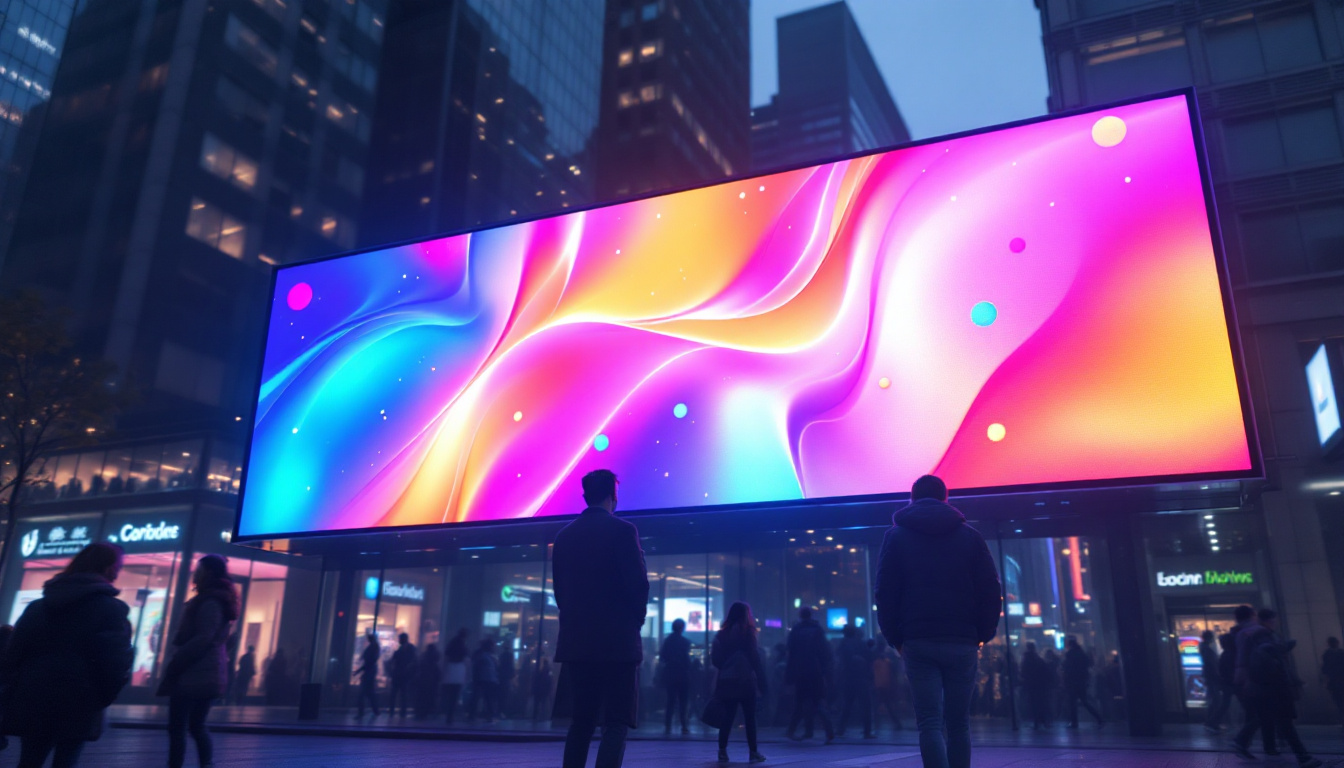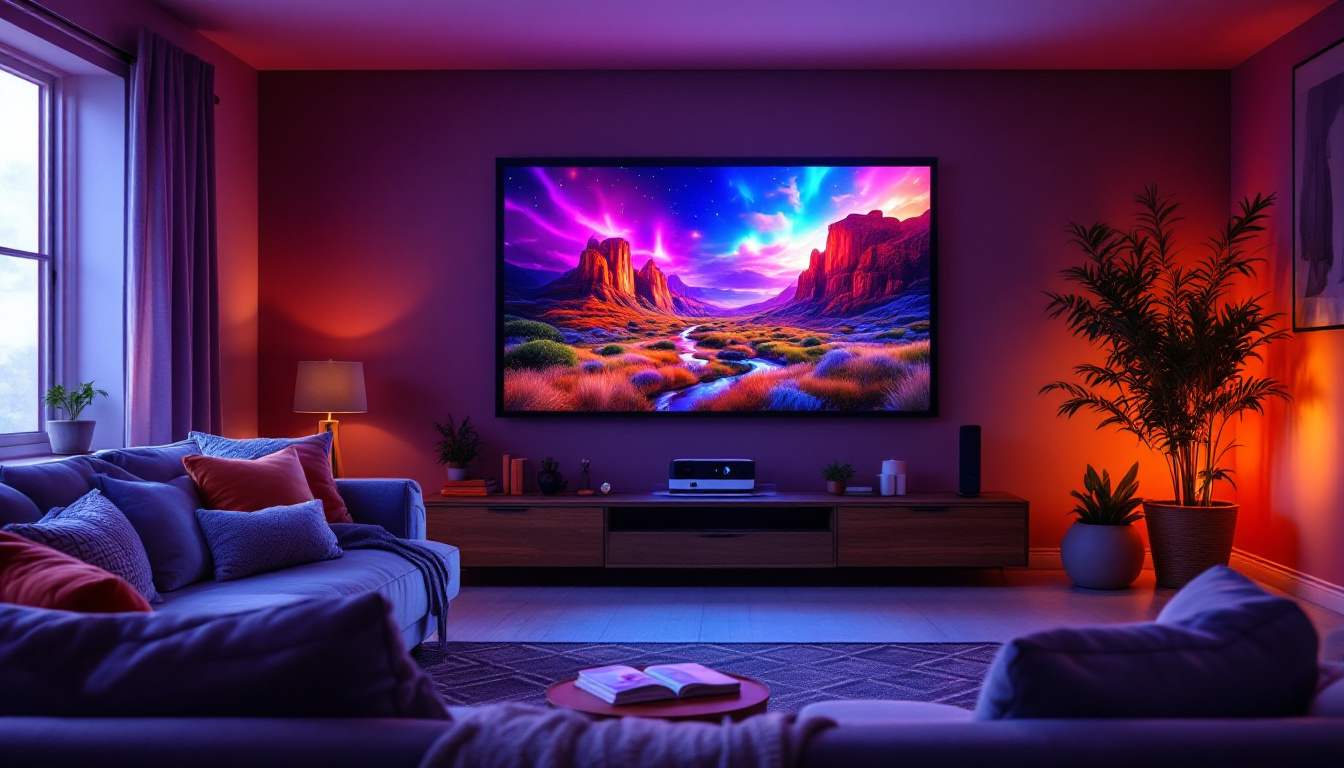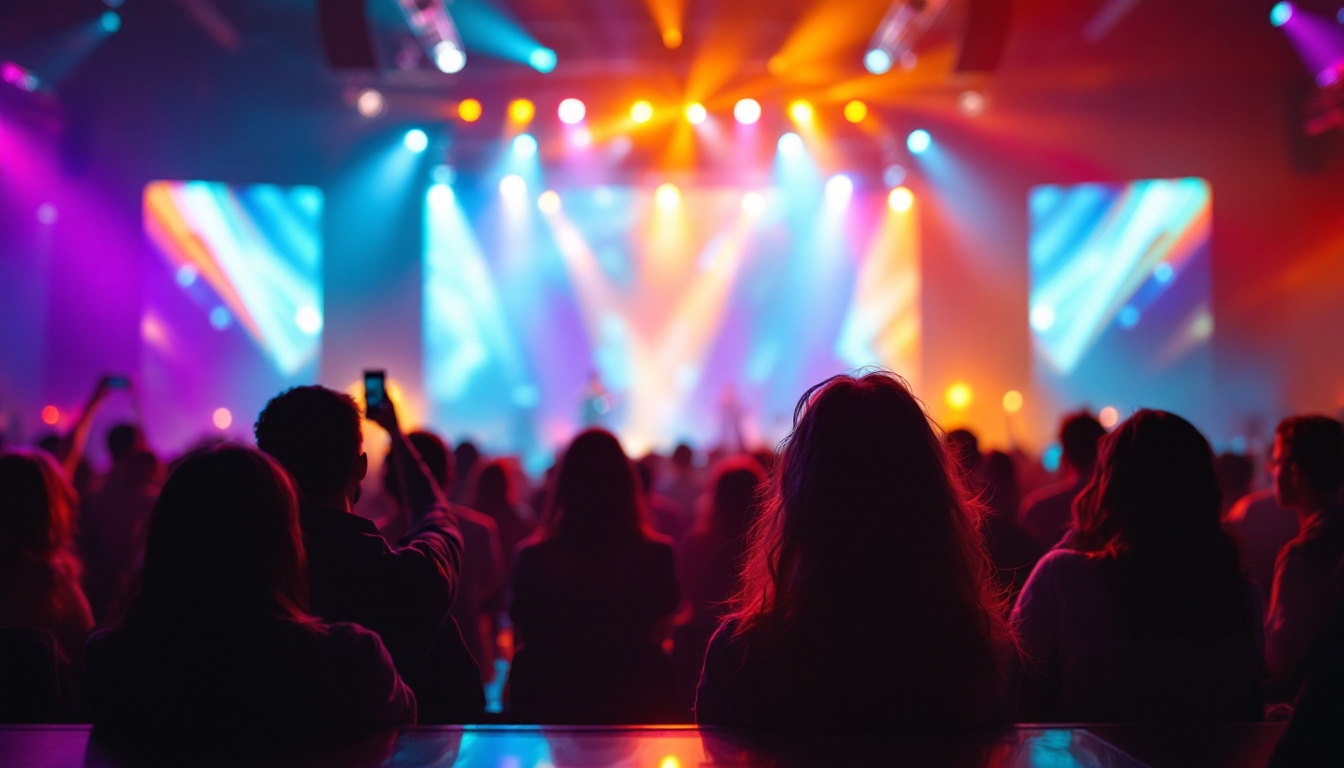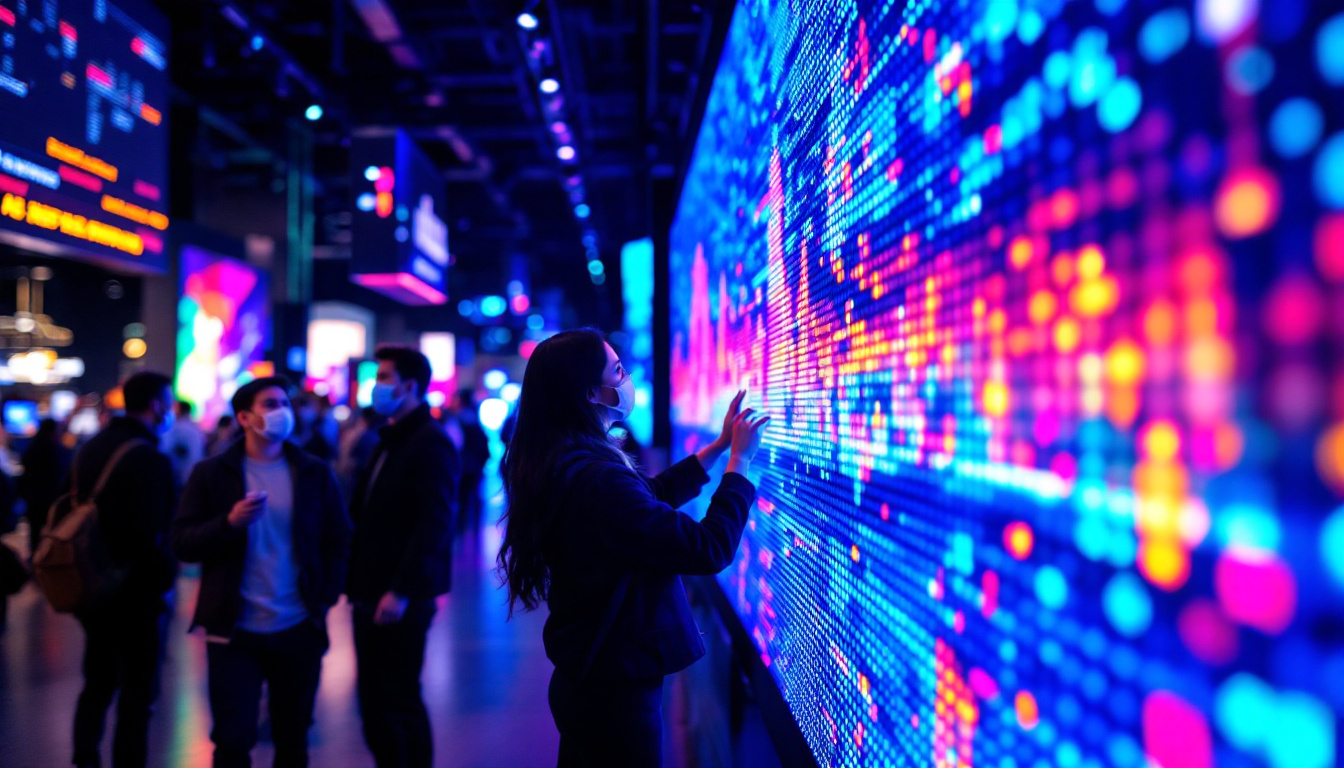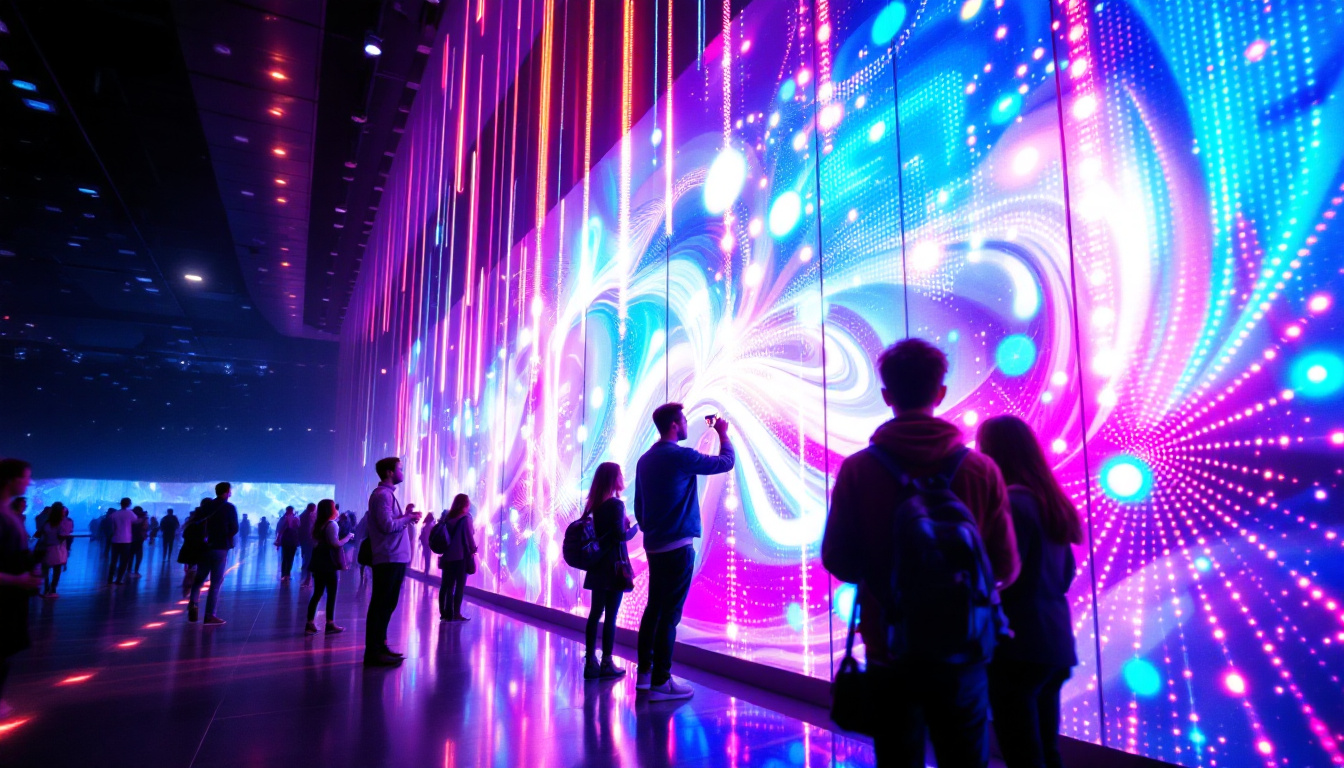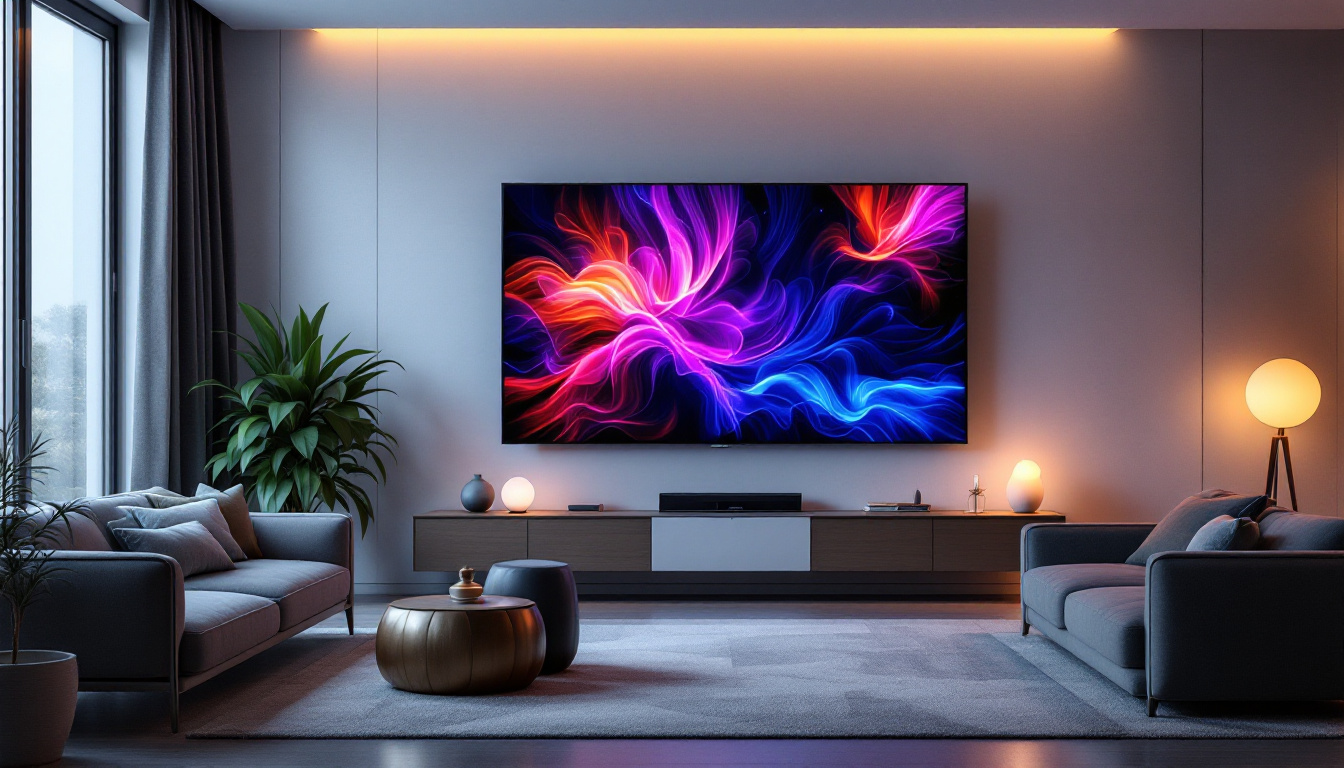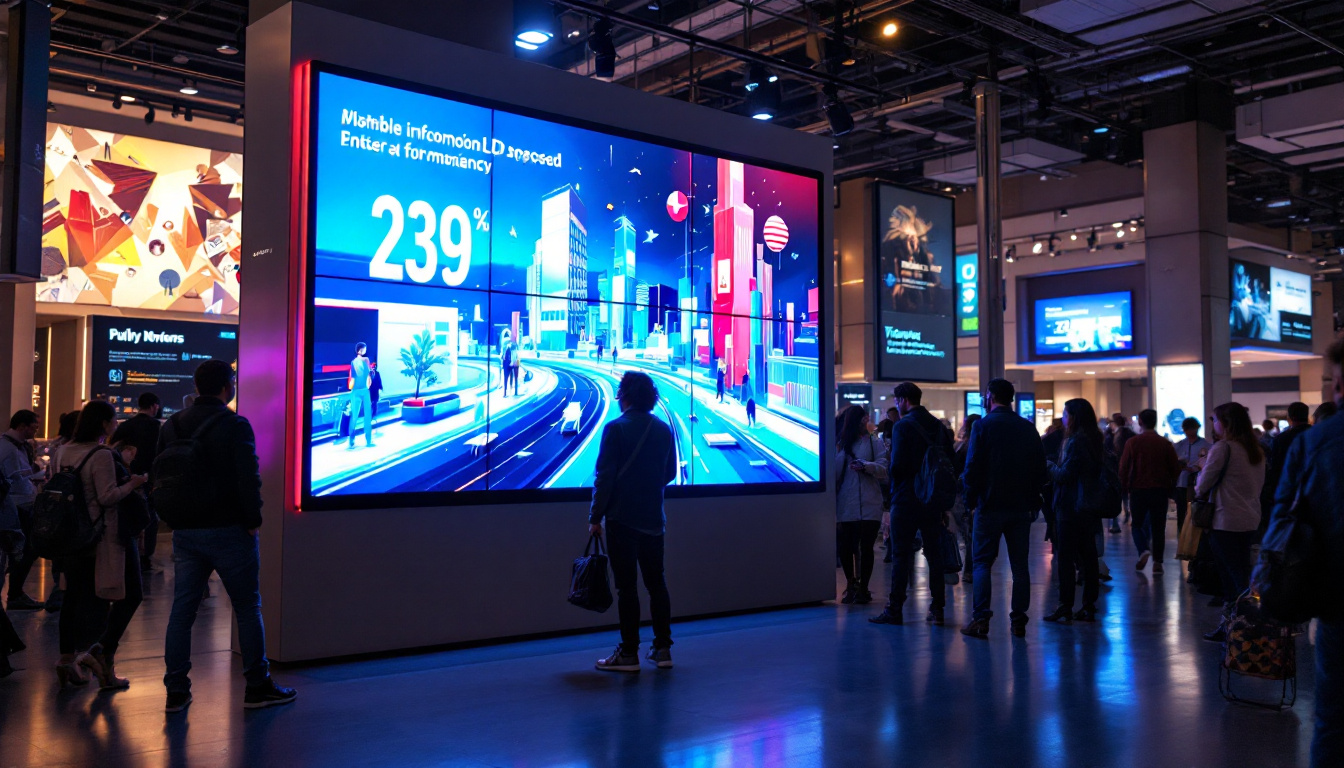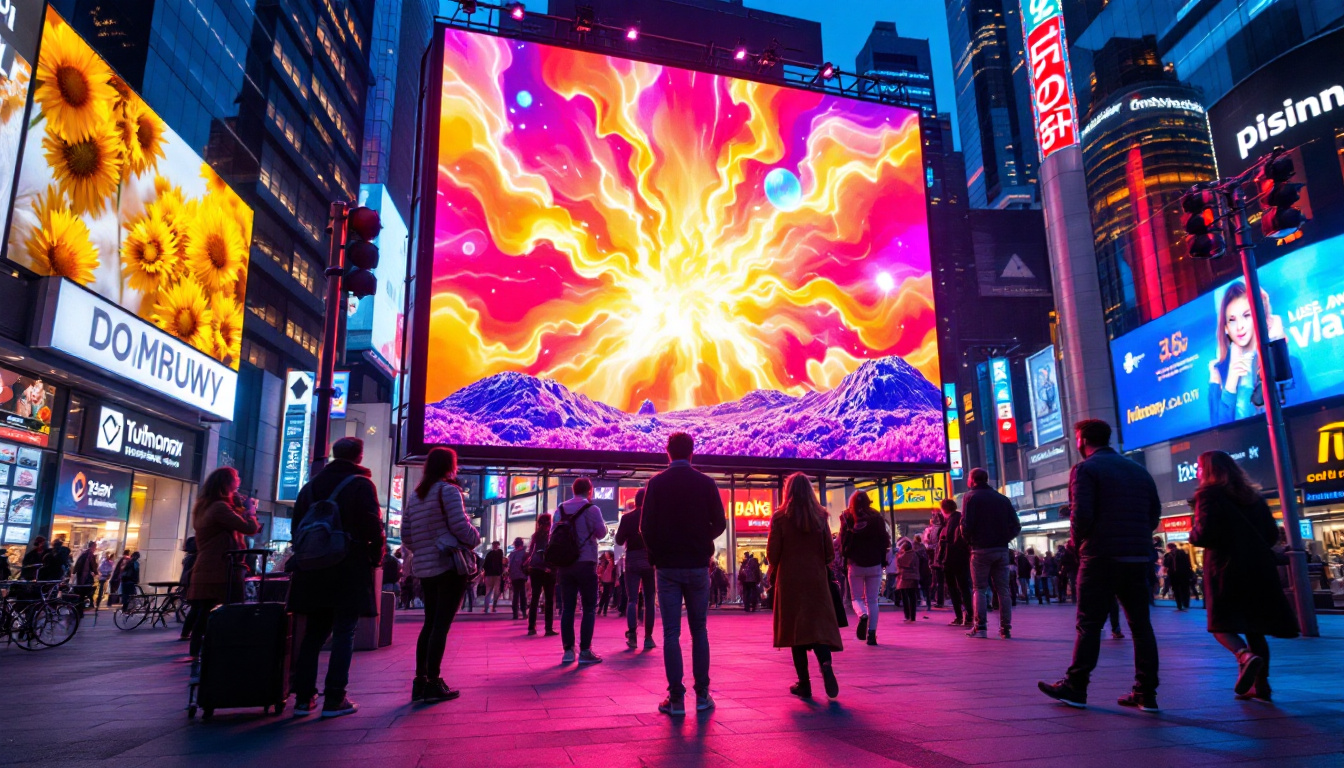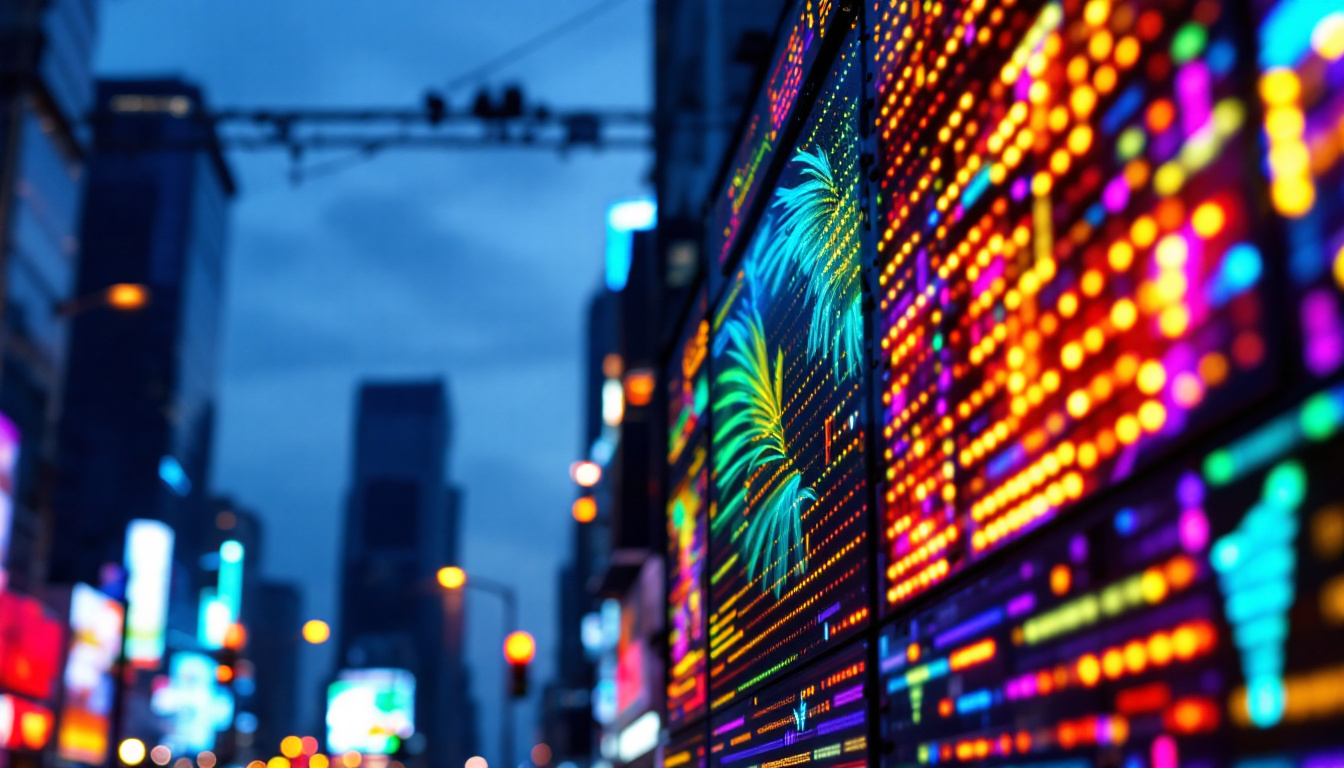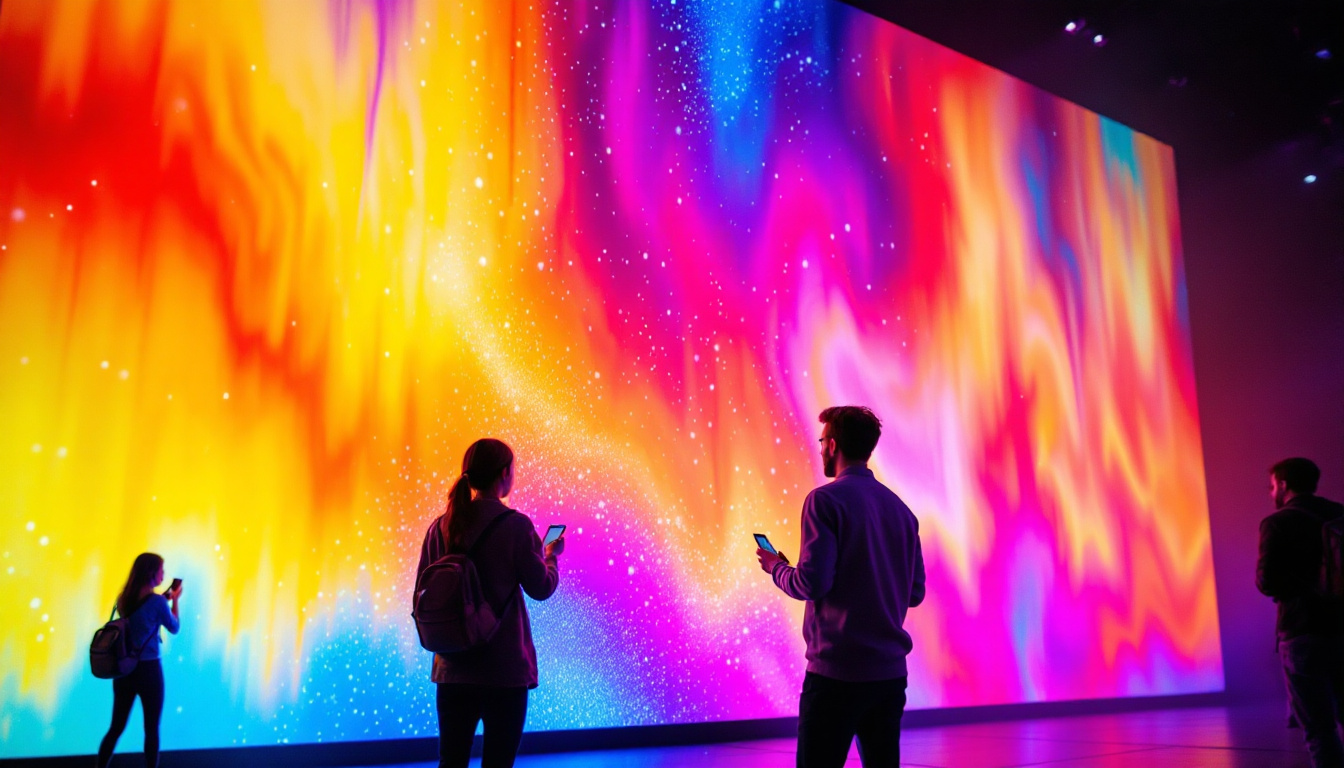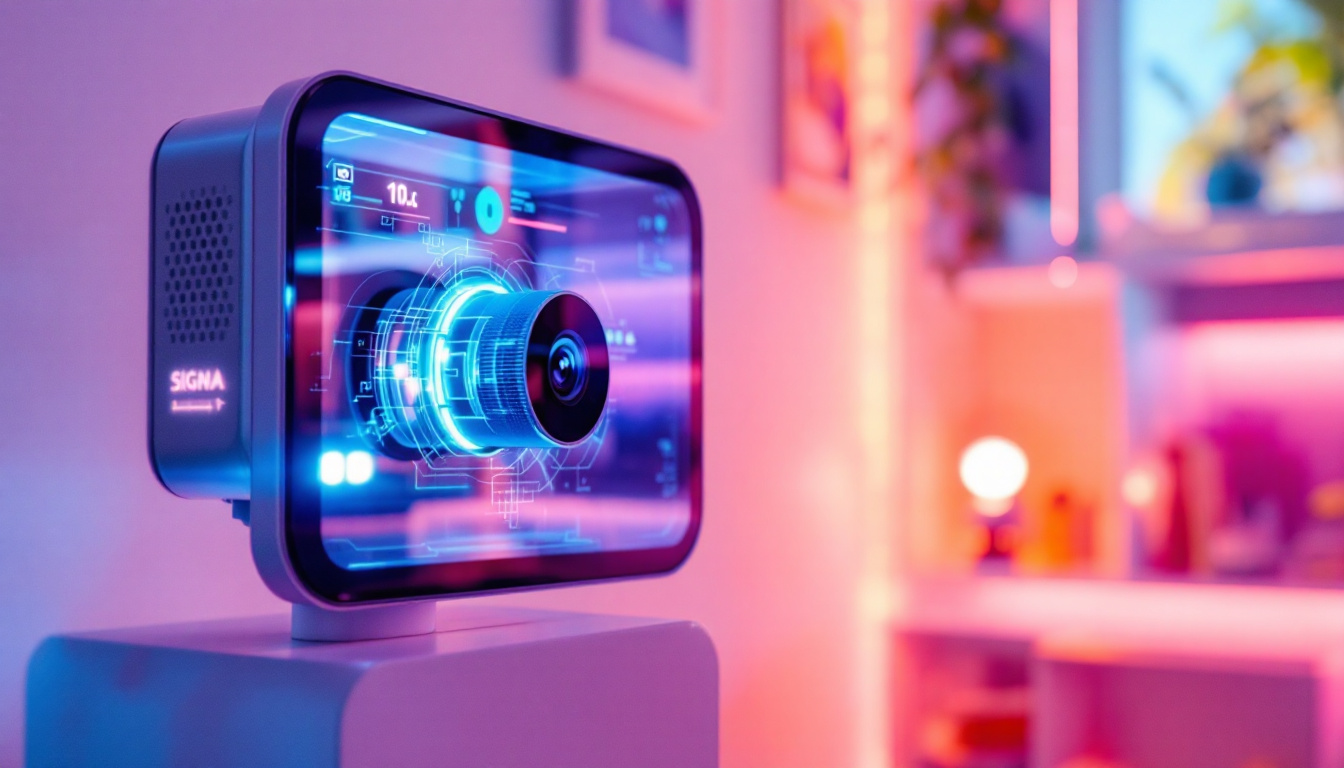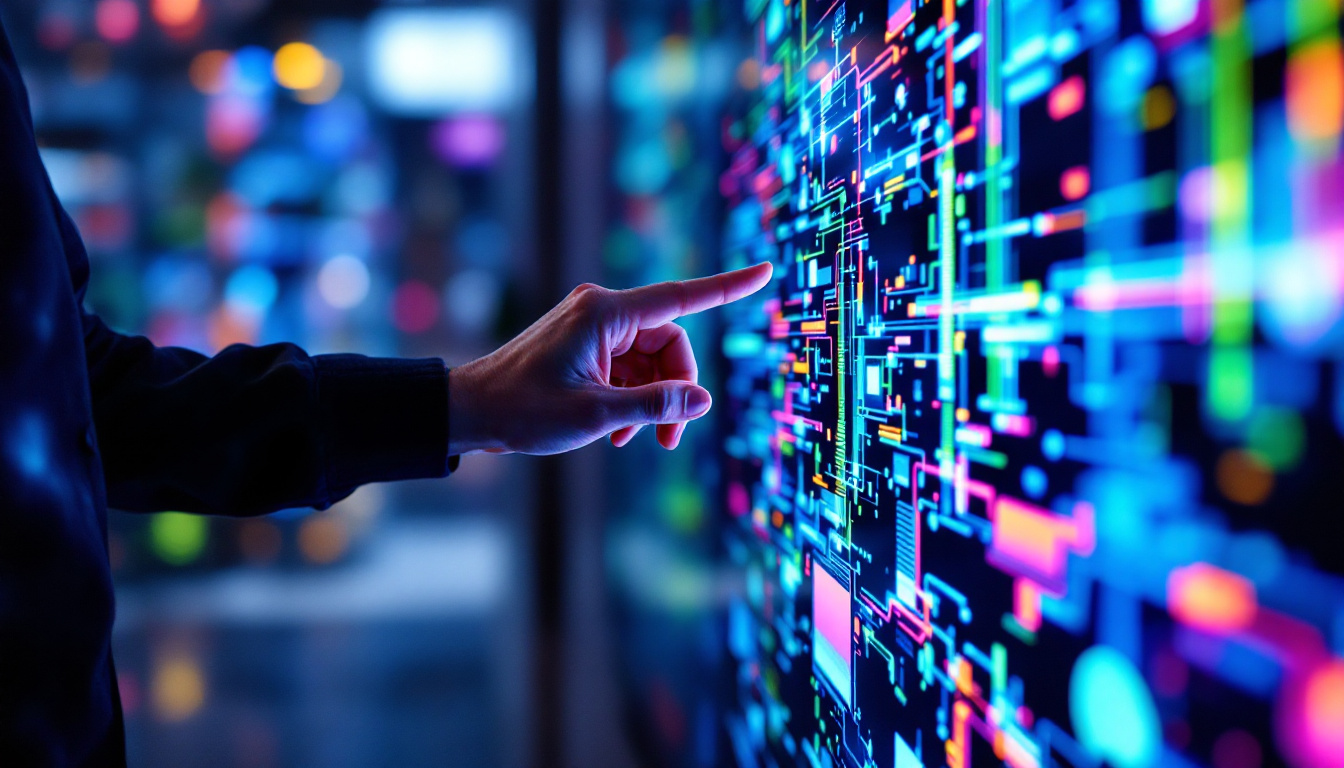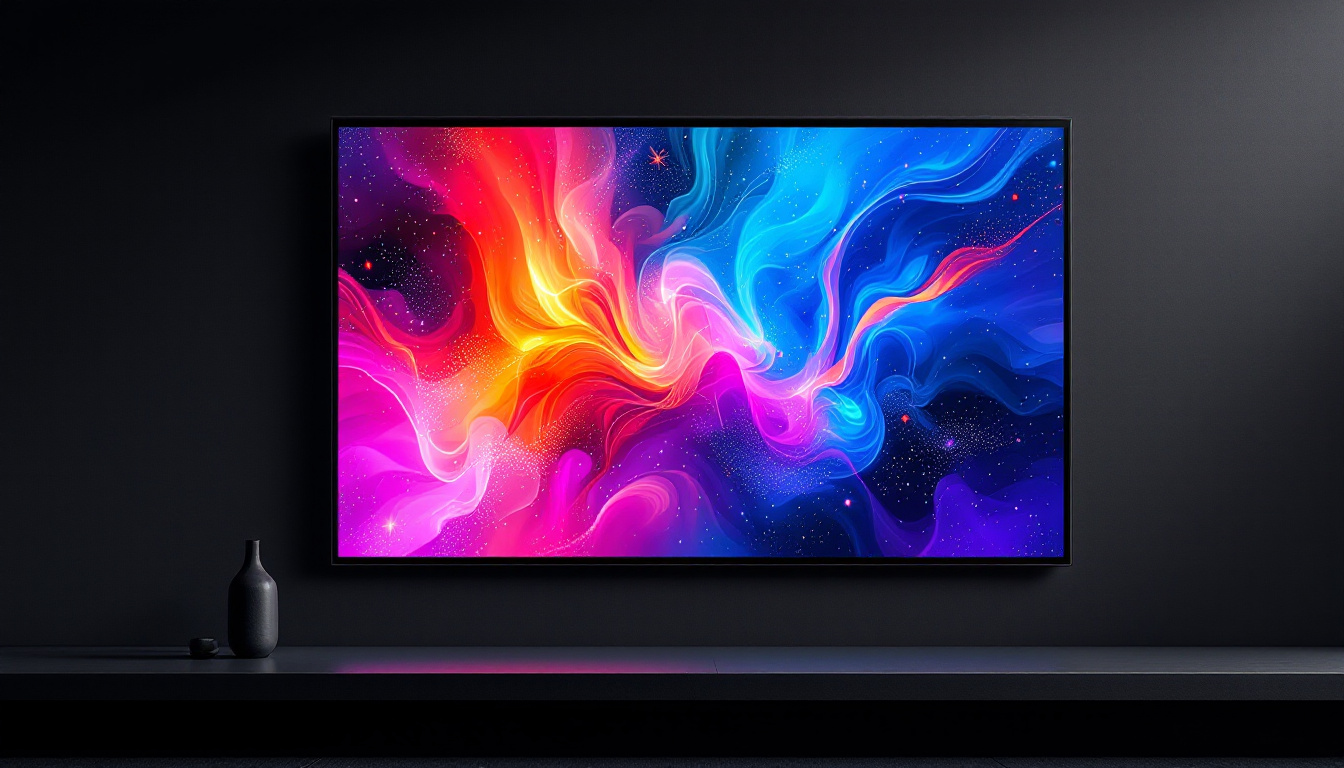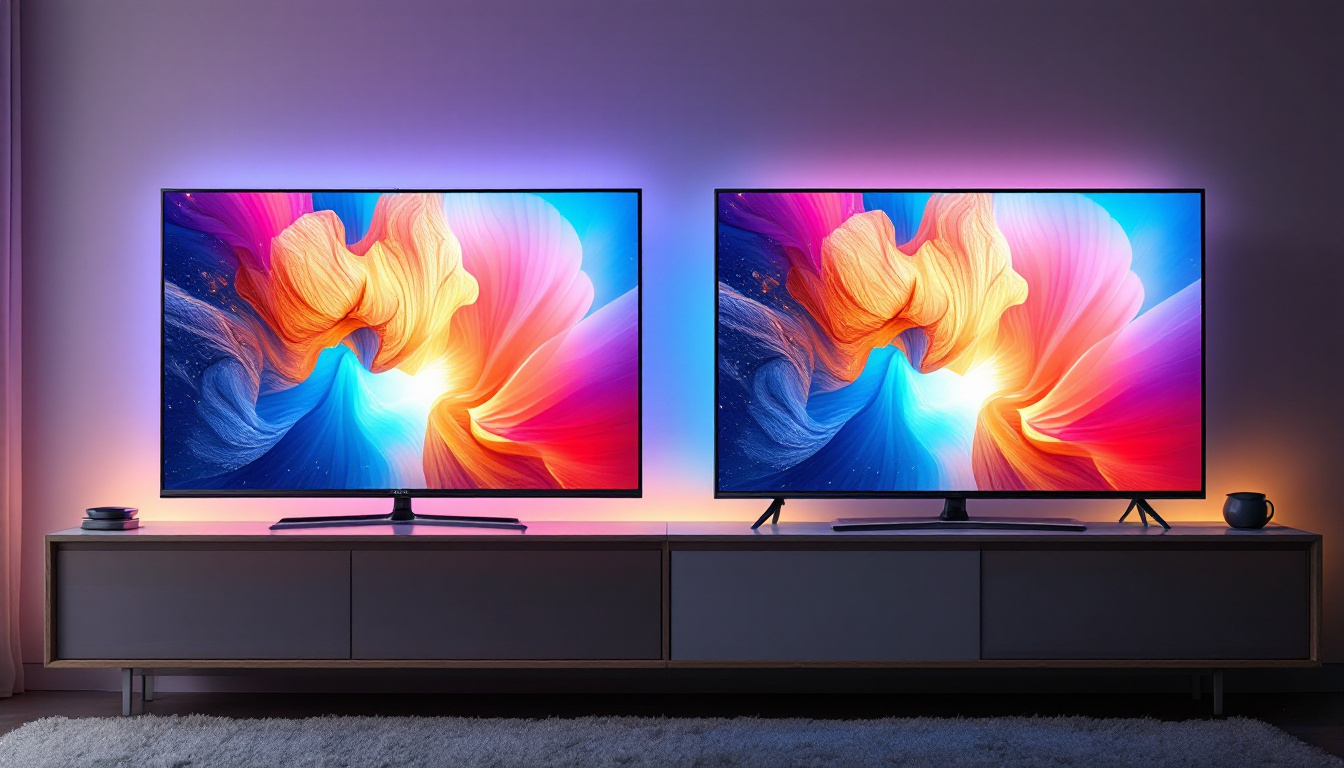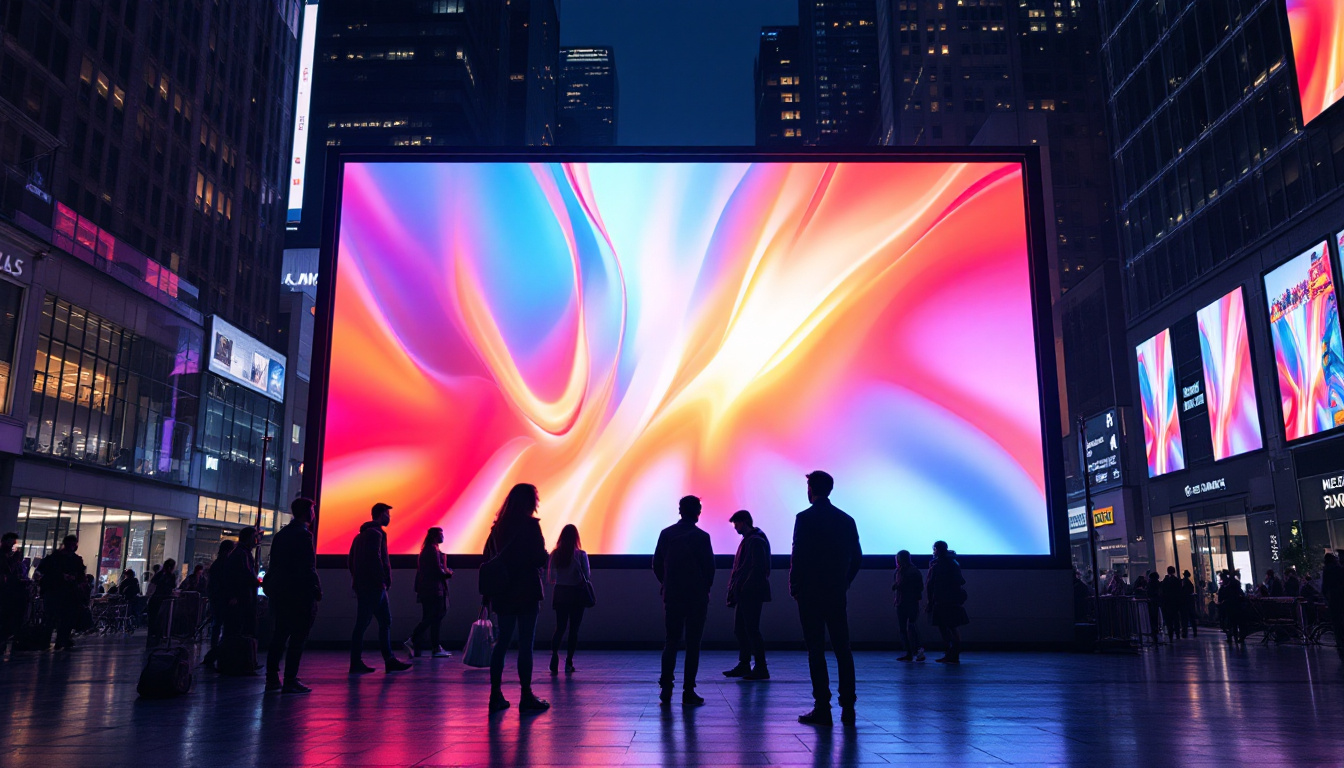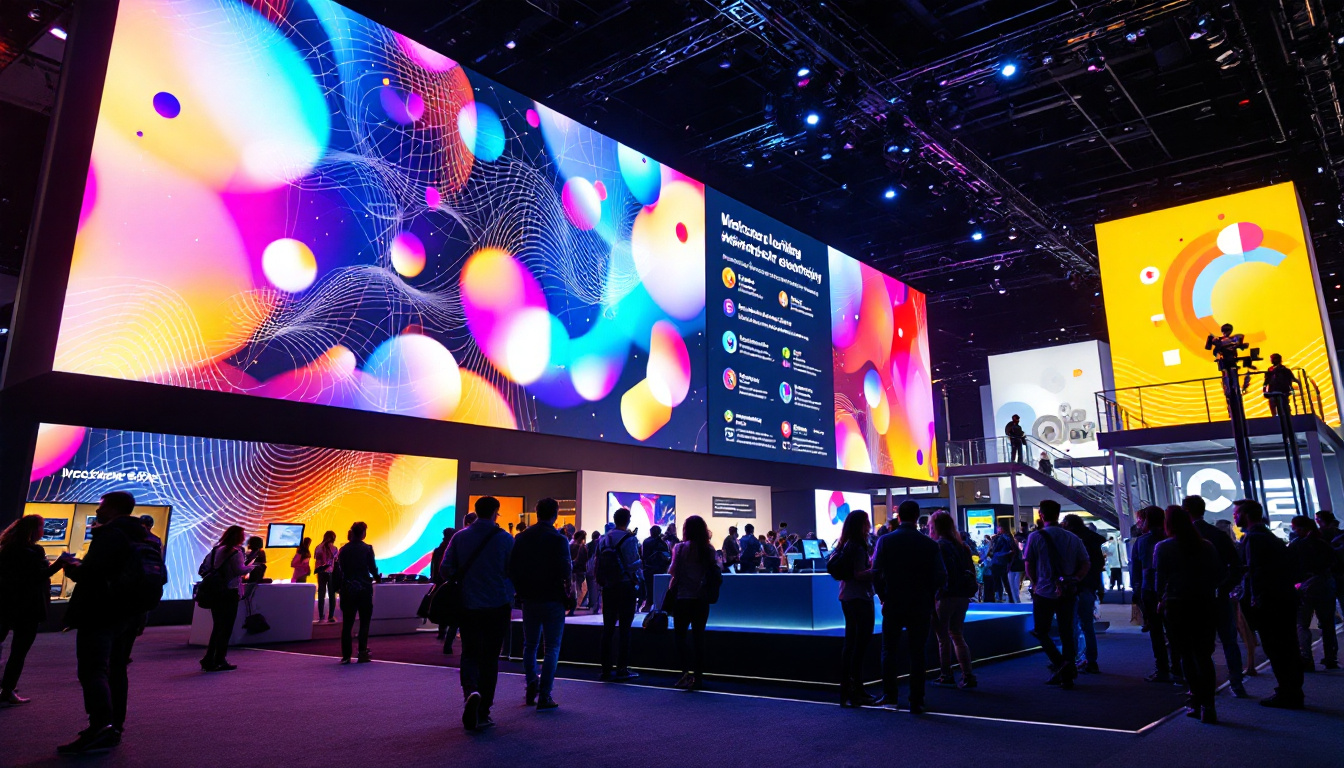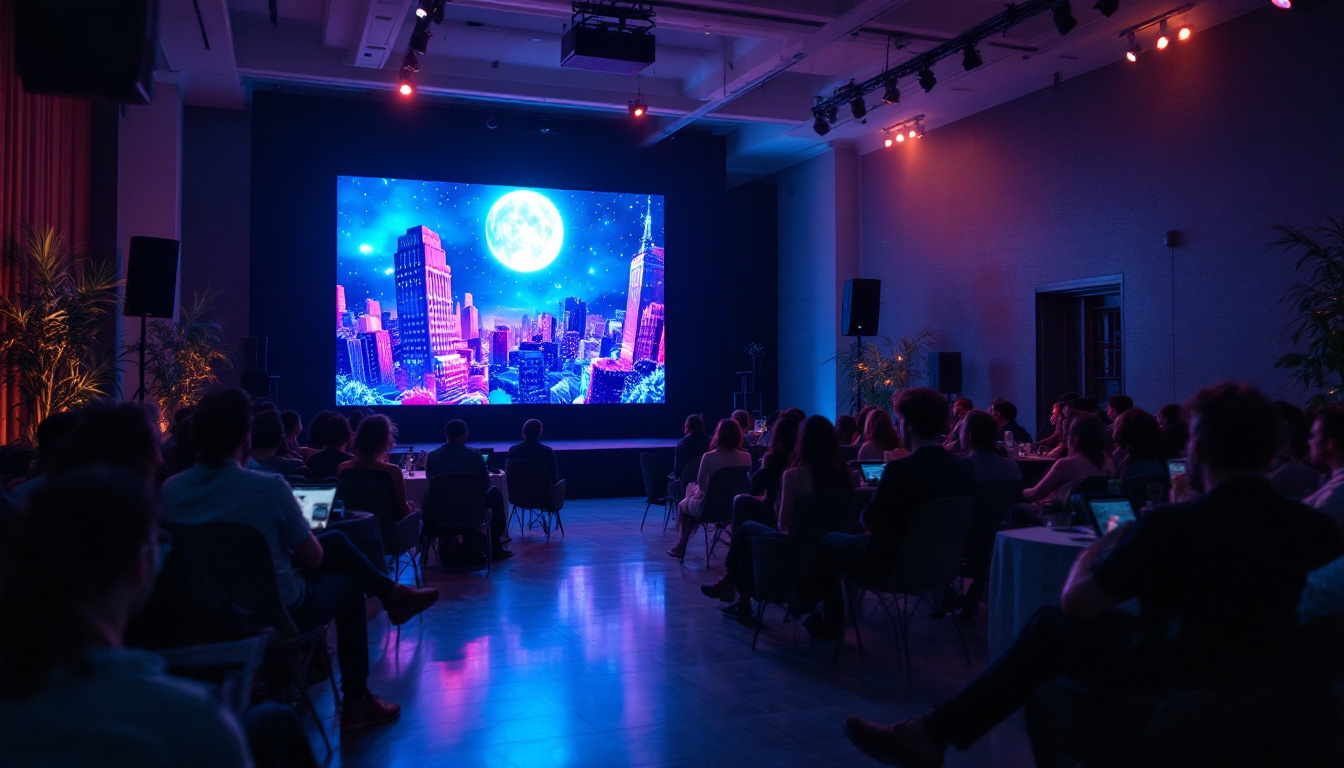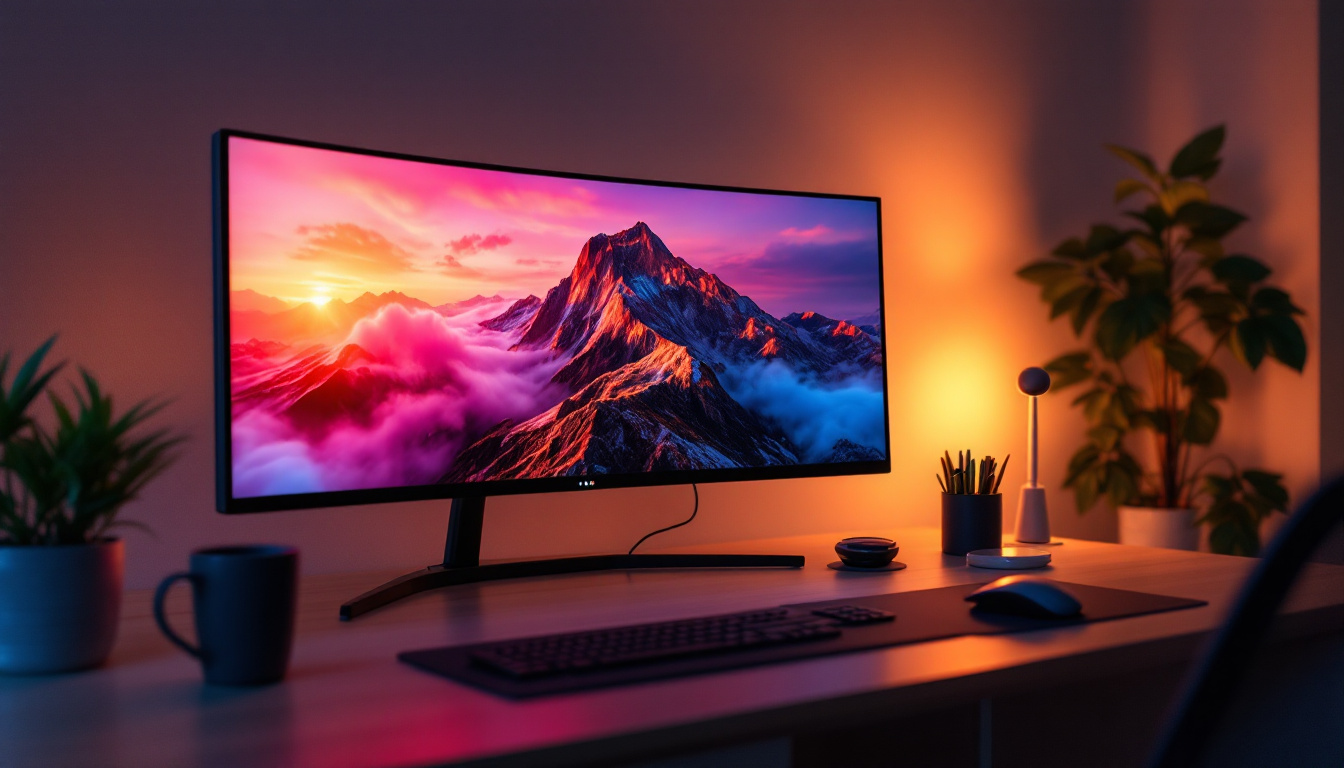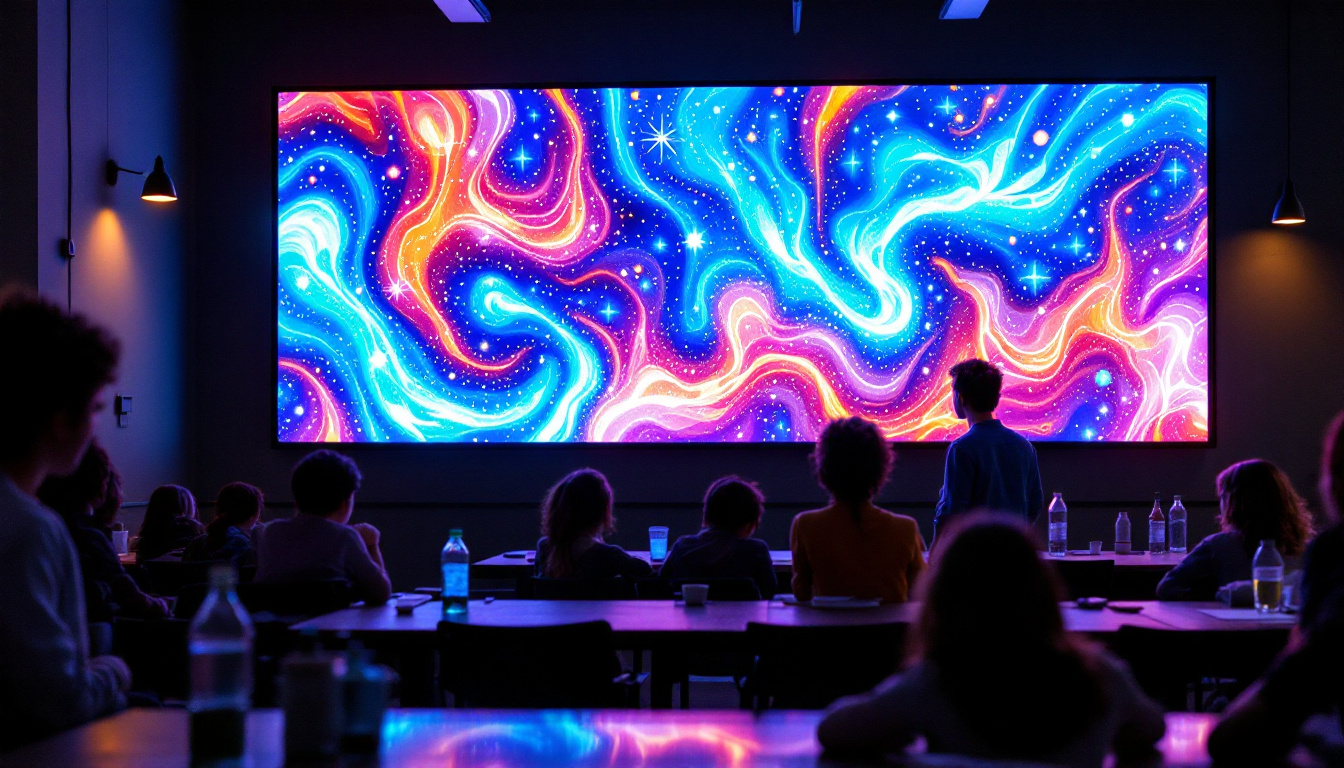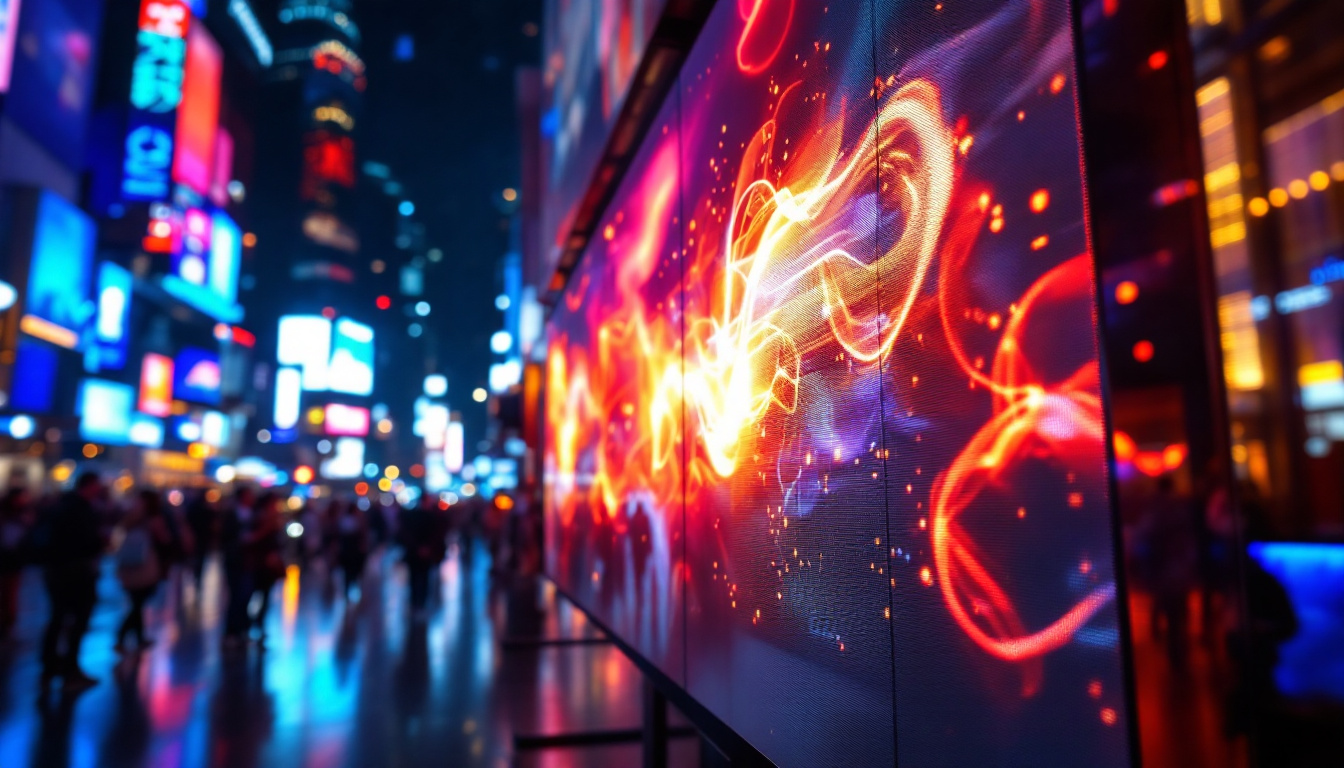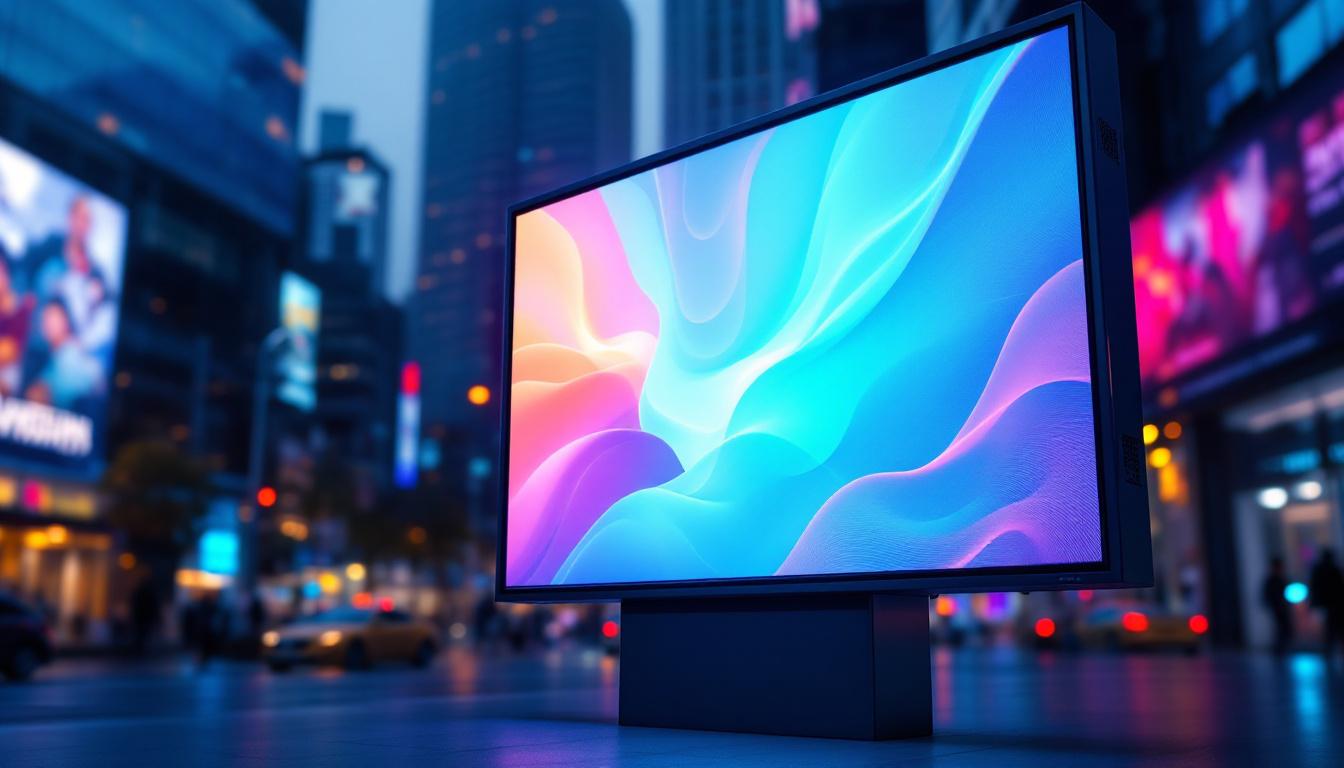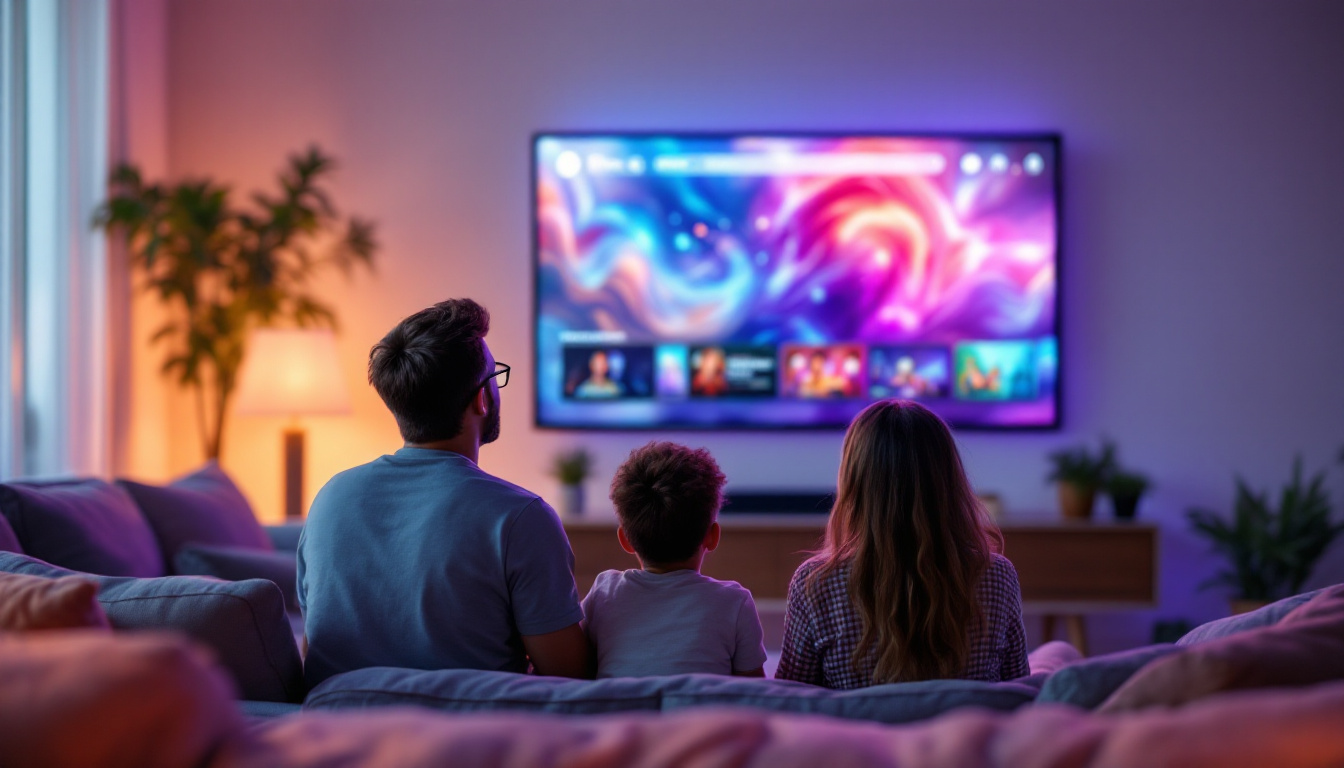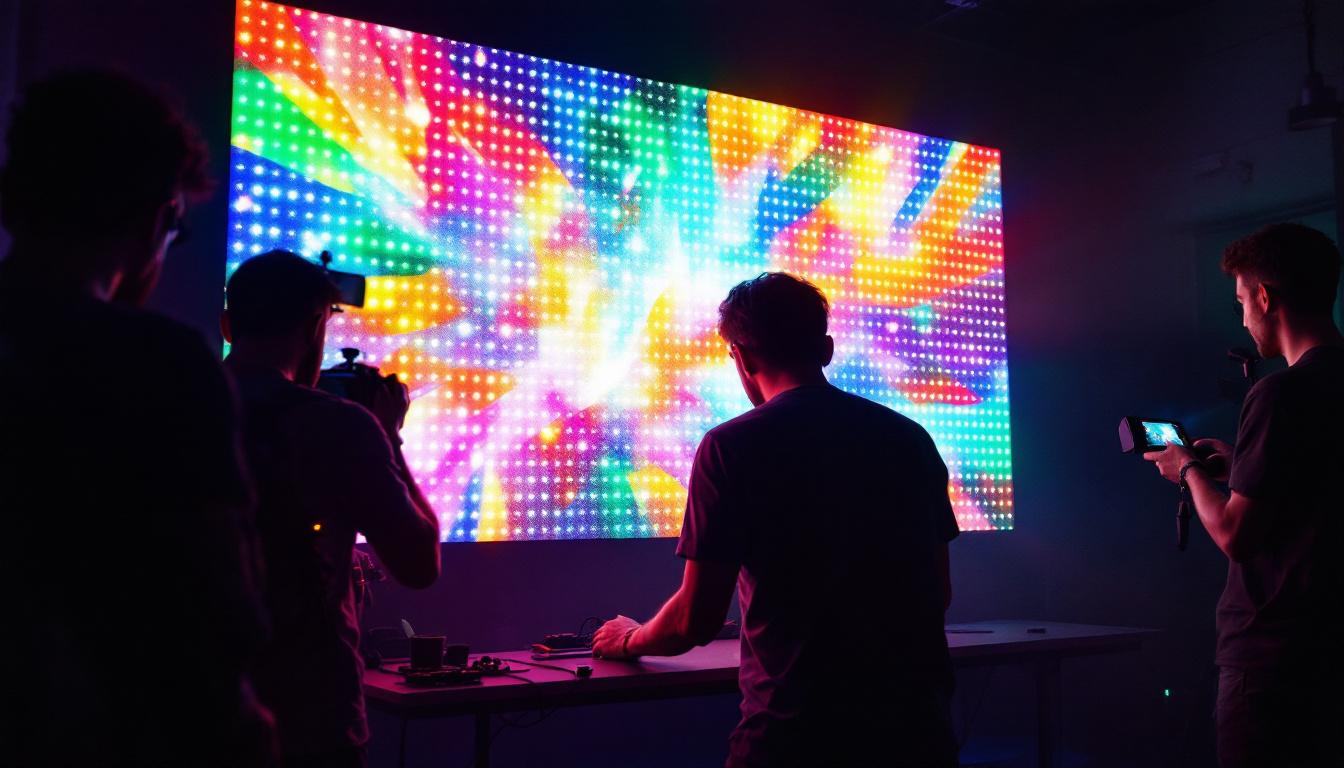In the ever-evolving landscape of advertising and information dissemination, digital banners have emerged as a powerful tool. Among the various types of digital displays, LED (Light Emitting Diode) technology stands out for its versatility, brightness, and energy efficiency. This article delves into the intricacies of LED displays, exploring their functionality, applications, and advantages over traditional advertising methods.
Understanding LED Technology
LED technology has revolutionized the way visual content is presented. At its core, an LED display consists of a matrix of tiny light-emitting diodes that work together to create vibrant images and videos. This technology not only enhances visual appeal but also offers a range of functionalities that traditional displays cannot match. The energy efficiency of LED displays is particularly noteworthy, as they consume significantly less power than conventional lighting solutions, making them an environmentally friendly option for both consumers and businesses alike.
How LED Displays Work
LED displays operate on a simple principle: when an electric current passes through a semiconductor material, it emits light. This phenomenon is known as electroluminescence. The diodes are arranged in clusters, forming pixels, which combine to produce a full-color image. The more pixels there are, the higher the resolution of the display, allowing for clearer and more detailed visuals. Furthermore, advancements in technology have led to the development of high dynamic range (HDR) capabilities in LED displays, enhancing color accuracy and contrast, which provides viewers with a more immersive experience.
Modern LED displays can be categorized into two main types: direct view and backlit. Direct view LED displays utilize individual diodes to create images, making them suitable for outdoor applications where brightness and visibility are crucial. Backlit LED displays, on the other hand, use LEDs to illuminate a liquid crystal display (LCD), which is more common in indoor settings. This backlighting can be adjusted to improve energy efficiency and enhance the viewing experience in various lighting conditions.
Types of LED Displays
There are several types of LED displays, each tailored for specific applications. Outdoor LED displays are designed to withstand harsh weather conditions and are often used for billboards and large advertising screens. Indoor LED displays, while not as robust, provide high resolution and are commonly found in venues such as shopping malls, airports, and sports arenas. The versatility of LED technology allows for dynamic content updates, enabling businesses to engage audiences with real-time information and advertisements that can be tailored to specific events or promotions.
Additionally, there are transparent LED displays that allow for creative advertising solutions, enabling businesses to showcase their products while maintaining visibility through the display. Flexible LED displays are another innovation, allowing for unique shapes and designs that can adapt to various environments. These displays can be used in innovative ways, such as wrapping around columns or creating immersive environments in retail spaces, further pushing the boundaries of traditional advertising and visual communication. As technology continues to evolve, the potential applications for LED displays are virtually limitless, paving the way for even more engaging and interactive experiences in the future.
Applications of LED Displays
The versatility of LED displays makes them suitable for a wide range of applications. From advertising to information dissemination, these displays have found their place in various sectors.
Advertising and Marketing
One of the most prominent uses of LED displays is in advertising. Businesses leverage the high visibility and vibrant colors of LED technology to capture the attention of potential customers. LED billboards can showcase dynamic content, including videos and animations, which traditional static billboards cannot achieve.
Moreover, the ability to change content remotely allows advertisers to tailor their messages based on time, audience, or even current events. This flexibility not only maximizes engagement but also enhances the effectiveness of marketing campaigns.
Information Display
Beyond advertising, LED displays are widely used for information dissemination. Transportation hubs such as airports and train stations utilize LED screens to provide real-time updates on arrivals and departures. This instant communication is crucial for travelers, ensuring they have the most up-to-date information at their fingertips.
In educational institutions, LED displays serve as informative tools, displaying schedules, announcements, and even interactive content for students and faculty. The ability to present information in a visually engaging manner enhances retention and comprehension.
Entertainment and Events
LED displays have become a staple in the entertainment industry. Concerts, sports events, and festivals utilize large LED screens to enhance the audience’s experience. These displays can broadcast live feeds, highlight performances, and create immersive environments that captivate attendees.
Furthermore, the integration of LED technology in stage design allows for dynamic lighting effects and backdrops, transforming traditional performances into visually stunning spectacles. The adaptability of LED displays enables event organizers to create unique atmospheres tailored to their specific themes.
Advantages of LED Displays
The adoption of LED displays comes with numerous advantages that set them apart from traditional display technologies. Understanding these benefits can help businesses and organizations make informed decisions when investing in digital signage.
Energy Efficiency
One of the standout features of LED technology is its energy efficiency. LED displays consume significantly less power compared to traditional display technologies like incandescent bulbs or fluorescent lights. This not only reduces operational costs but also contributes to a smaller carbon footprint, making LED displays an environmentally friendly choice.
With advancements in technology, many LED displays are now equipped with smart features that optimize energy consumption based on ambient light conditions. This means that the display can adjust its brightness automatically, ensuring optimal visibility while minimizing energy usage.
Longevity and Durability
LED displays are renowned for their longevity. With a lifespan that can exceed 100,000 hours, LED technology outlasts many traditional display options. This durability is particularly beneficial for outdoor applications, where displays are exposed to various environmental factors.
Moreover, LED displays are resistant to shock and vibration, making them ideal for high-traffic areas and events. This resilience translates into lower maintenance costs and reduced downtime, ensuring that businesses can rely on their displays for consistent performance.
High Visibility and Image Quality
LED displays are designed to deliver exceptional image quality, even in bright sunlight. The high brightness levels and contrast ratios ensure that content remains visible from a distance, making them ideal for outdoor advertising.
Furthermore, advancements in pixel technology have led to higher resolutions, allowing for detailed images and videos. This clarity enhances the overall viewer experience, making LED displays a preferred choice for both advertising and information dissemination.
Challenges and Considerations
While LED displays offer numerous advantages, there are also challenges and considerations that businesses must keep in mind when implementing this technology.
Initial Investment Costs
One of the primary challenges associated with LED displays is the initial investment cost. High-quality LED technology can be expensive, and businesses may need to allocate a significant budget for installation. However, it is essential to consider the long-term savings in energy costs and maintenance when evaluating the overall return on investment.
Many companies offer financing options or leasing agreements, which can help mitigate the upfront costs and make LED displays more accessible to a wider range of businesses.
Content Management
Another consideration is the management of content displayed on LED screens. Businesses must invest in content creation and management systems to ensure that their displays remain fresh and engaging. This may require hiring skilled personnel or outsourcing to specialized agencies, adding to the overall operational costs.
However, with the right tools and strategies in place, businesses can streamline content management processes, ensuring that their displays consistently deliver impactful messages to their target audience.
Regulatory Compliance
In many regions, there are regulations governing the use of outdoor LED displays, particularly concerning brightness levels, content, and placement. Businesses must familiarize themselves with local laws and obtain the necessary permits before installation. Failure to comply with regulations can result in fines or the removal of the display, making it crucial to conduct thorough research before proceeding.
Future Trends in LED Display Technology
The future of LED display technology is promising, with ongoing advancements that continue to enhance their capabilities and applications. Several trends are shaping the landscape of LED displays, offering exciting possibilities for businesses and consumers alike.
Smart Displays
As the Internet of Things (IoT) continues to grow, smart LED displays are becoming increasingly prevalent. These displays can connect to the internet, allowing for real-time content updates, remote management, and data analytics. Businesses can leverage this technology to tailor their messages based on audience behavior and preferences, maximizing engagement.
Additionally, smart displays can integrate with other technologies, such as facial recognition and audience measurement systems, providing valuable insights into viewer demographics and engagement levels.
Flexible and Transparent Displays
Innovations in manufacturing processes are leading to the development of flexible and transparent LED displays. These displays can be bent or shaped to fit unique environments, offering creative solutions for businesses looking to stand out. Transparent displays, on the other hand, allow for product visibility while showcasing dynamic content, making them ideal for retail environments.
As these technologies continue to advance, businesses will have more opportunities to create visually stunning displays that capture attention and enhance brand recognition.
Enhanced Interactivity
Interactivity is becoming a key feature in modern LED displays. Touch-sensitive screens and gesture recognition technology are enabling businesses to create engaging experiences for their audiences. This interactivity not only enhances viewer engagement but also allows for personalized content delivery, making advertisements more relevant and impactful.
As consumers increasingly seek immersive experiences, the integration of interactive elements in LED displays will become a vital aspect of effective marketing strategies.
Conclusion
LED displays have transformed the way businesses communicate with their audiences. With their vibrant colors, energy efficiency, and versatility, they offer a compelling alternative to traditional advertising methods. While there are challenges to consider, the benefits of LED technology far outweigh the drawbacks.
As advancements continue to shape the future of LED displays, businesses that embrace this technology will be well-positioned to capture attention, engage customers, and enhance their brand presence in an increasingly competitive marketplace. The journey of LED displays is just beginning, and their potential is limitless.
Discover LumenMatrix LED Display Solutions
Ready to elevate your brand’s visibility and captivate your audience with the most vibrant and energy-efficient displays? LumenMatrix is at the forefront of LED display innovation, offering a diverse range of solutions tailored to your unique needs. From Indoor and Outdoor LED Walls to specialized displays for vehicles, sports, and even customizable options, we have the technology to transform your visual communication. Embrace the future with LumenMatrix and create unforgettable visual experiences. Check out LumenMatrix LED Display Solutions today and see the difference for yourself.

